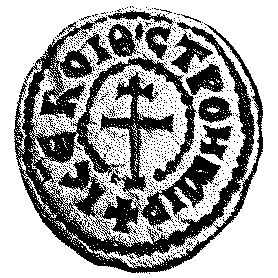Serbian Orthodox Church
Serbian Orthodox Church
The Serbian Orthodox Church is one of the autocephalous Eastern Orthodox Christian churches. It is the second oldest Slavic Orthodox Church in the world, as well as an important part of the Orthodox Christian world. The Serbian Orthodox Church serves as the spiritual guide for the Serbian people, playing a pivotal role in the history, culture, and identity of the nation.
History[edit | edit source]
The origins of the Serbian Orthodox Church can be traced back to the Christianization of the Slavs in the 7th century. However, it was officially established in 1219, when Saint Sava secured autocephaly from the Byzantine Patriarch of Constantinople. This event marked a significant milestone in the development of a unified Serbian state and church.
Throughout the centuries, the Serbian Orthodox Church has endured periods of flourishing and hardship. During the Ottoman Empire's rule, the Church preserved national identity and culture, despite facing numerous challenges. The 19th and early 20th centuries saw a revival and strengthening of the Church as Serbia regained independence and expanded its territory.
Beliefs and Practices[edit | edit source]
The Serbian Orthodox Church adheres to the Nicene Creed, which is the statement of faith for all Orthodox Christian Churches. Its theology is based on the teachings of the Early Church Fathers, and it practices the sacraments as means of grace and salvation. The Divine Liturgy, the Eucharist, Baptism, Confession, Marriage, Holy Orders, and Anointing of the Sick are the seven sacraments recognized by the Church.
Organization[edit | edit source]
The Serbian Orthodox Church is organized in a hierarchical structure. At the top is the Patriarch of the Serbian Orthodox Church, followed by bishops who oversee dioceses. The Church is divided into metropolitanates, dioceses, and parishes, with clergy consisting of bishops, priests, and deacons.
Cultural Impact[edit | edit source]
The Serbian Orthodox Church has had a profound impact on Serbian culture, art, and identity. It has been a custodian of Serbian heritage, with many monasteries and churches designated as UNESCO World Heritage Sites. The Church also plays a significant role in the education system and social services.
Contemporary Issues[edit | edit source]
Today, the Serbian Orthodox Church faces various contemporary issues, including maintaining its relevance in modern society, addressing political and ethnic tensions in the Balkans, and engaging with the global Orthodox community.
See Also[edit | edit source]
Search WikiMD
Ad.Tired of being Overweight? Try W8MD's physician weight loss program.
Semaglutide (Ozempic / Wegovy and Tirzepatide (Mounjaro / Zepbound) available.
Advertise on WikiMD
|
WikiMD's Wellness Encyclopedia |
| Let Food Be Thy Medicine Medicine Thy Food - Hippocrates |
Translate this page: - East Asian
中文,
日本,
한국어,
South Asian
हिन्दी,
தமிழ்,
తెలుగు,
Urdu,
ಕನ್ನಡ,
Southeast Asian
Indonesian,
Vietnamese,
Thai,
မြန်မာဘာသာ,
বাংলা
European
español,
Deutsch,
français,
Greek,
português do Brasil,
polski,
română,
русский,
Nederlands,
norsk,
svenska,
suomi,
Italian
Middle Eastern & African
عربى,
Turkish,
Persian,
Hebrew,
Afrikaans,
isiZulu,
Kiswahili,
Other
Bulgarian,
Hungarian,
Czech,
Swedish,
മലയാളം,
मराठी,
ਪੰਜਾਬੀ,
ગુજરાતી,
Portuguese,
Ukrainian
Medical Disclaimer: WikiMD is not a substitute for professional medical advice. The information on WikiMD is provided as an information resource only, may be incorrect, outdated or misleading, and is not to be used or relied on for any diagnostic or treatment purposes. Please consult your health care provider before making any healthcare decisions or for guidance about a specific medical condition. WikiMD expressly disclaims responsibility, and shall have no liability, for any damages, loss, injury, or liability whatsoever suffered as a result of your reliance on the information contained in this site. By visiting this site you agree to the foregoing terms and conditions, which may from time to time be changed or supplemented by WikiMD. If you do not agree to the foregoing terms and conditions, you should not enter or use this site. See full disclaimer.
Credits:Most images are courtesy of Wikimedia commons, and templates, categories Wikipedia, licensed under CC BY SA or similar.
Contributors: Prab R. Tumpati, MD






